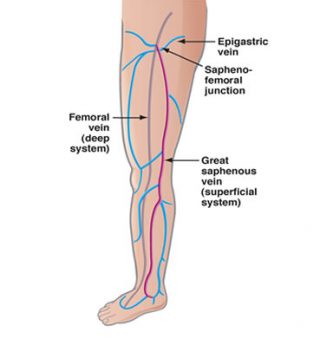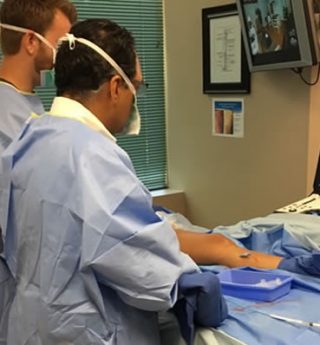
Saturday and Sunday - CLOSED

Longwood, Fl 32779
Approximately 40 million Americans are affected by vein disease, with chronic venous insufficiency and varicose veins being the most common types.
Vein disease affects the veins’ ability to return blood to the heart, often causing symptoms like swelling, aching, and visible varicose veins. This can develop into chronic conditions like venous insufficiency if left untreated.
Blockages in the veins, also known as venous thrombosis, occur when blood clots form within the veins, obstructing blood flow. This usually happens when blood flow slows down or becomes stagnant, allowing clots to develop. Common causes include prolonged immobility, injury to the vein, or underlying medical conditions. Over time, these clots can enlarge and completely block the vein, leading to swelling, pain, and even more severe complications like deep vein thrombosis (DVT) or pulmonary embolism if the clot dislodges and travels to the lungs. Venous blockages result from clot formation and impaired blood flow within the veins.

Risk factors for vein disease include age, genetics, pregnancy, prolonged standing or sitting, obesity, and a sedentary lifestyle. Individuals with these risk factors are more likely to experience complications from vein disease.
Common symptoms include swelling in the legs, pain or cramping, heaviness, skin discoloration, and visible varicose veins. In more advanced cases, ulcers or blood clots may form, requiring prompt medical intervention.

In order to prevent a heart attack you need to treat and deal with the underlying risk factors. These include increase in physical activity and lifestyle changes which include a healthy diet which is low in cholesterol, reducing stress, weight loss, and quitting smoking. In addition if you suffer from diabetes high blood pressure and or high cholesterol you need to talk to
Preventive measures include maintaining a healthy weight, staying active, elevating the legs when resting, and wearing compression stockings if recommended by a healthcare provider. Early diagnosis and treatment can help prevent the progression of vein disease.
Treatments vary based on severity and can range from conservative approaches like compression therapy and lifestyle changes to minimally invasive procedures like sclerotherapy, endovenous laser therapy, or surgery in severe cases.
Copyright 2024. All rights reserved.